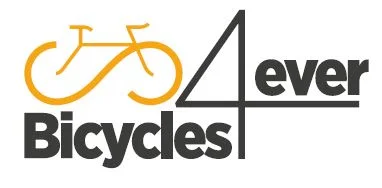Can We Keep Up With A Pro Cyclist? with GCN
Source: GCN Youtube Channel: Can We Keep Up With A Pro Cyclist?
Video Can We Keep Up With A Pro Cyclist? with Global Cycling Network
Video Can We Keep Up With A Pro Cyclist? with Global Cycling Network YouTube Channel.
Can We Keep Up With A Pro Cyclist?
Heading 1: Introduction
Subheading 1: The Science of Drafting in Cycling
Cycling at professional paces of over 50 km/h is a feat that many of us can only dream of achieving. Pro cyclists have the ability to maintain such high speeds for hours at a time, thanks in part to the concept of drafting or slipstreaming. Drafting involves riding behind another cyclist to reduce air resistance, allowing the rider to go faster with less effort. This method is not only used in cycling but is also prevalent in nature, such as fish swimming in schools or birds flying in flocks.
Heading 2: The Experiment
Subheading 2: Meet Alexis Brunal, Our Pro Cyclist
In an attempt to measure drafting and understand its effects better, scientists have conducted experiments using wind tunnels and computational fluid dynamics. However, the real-world application of drafting remains challenging due to the numerous variables involved. To shed light on the topic, Alexis Brunal, a professional cyclist with an FTP of 400 watts, was enlisted for an experiment. With his extensive experience riding for esteemed teams like Groupama FDJ and UAE Team Emirates, Alexis is a perfect candidate to showcase the effects of drafting on speed and power output.
Heading 3: Testing the Limits
Subheading 3: Pushing the Speed Limits
On a straight road, Alexis gradually increased his speed from 40 km/h to 50 km/h and beyond while the narrator attempted to draft behind him. As Alexis reached speeds exceeding 60 km/h, the narrator struggled to keep up, eventually getting dropped when the power output became too high to maintain. The experiment highlighted the significant difference in power required to maintain drafting at varying speeds and the impact of slight inclines on performance.
Heading 4: The Challenges of Drafting
Subheading 4: The Skill and Precision of Drafting
During the experiment, Alexis pointed out the challenges of drafting, including the importance of maintaining a close gap between riders to maximize the benefits of reduced air resistance. He emphasized the skill required to effectively draft behind another cyclist, as even a small distance can result in increased power output. The human factor, such as confidence and experience, plays a crucial role in successful drafting, showcasing that science alone cannot account for all variables in real-world scenarios.
Heading 5: The Takeaway
Subheading 5: Lessons Learned from the Experiment
As the experiment concluded, the importance of skill and precision in drafting became apparent. While scientific studies provide valuable insight into drafting mechanics, they do not encapsulate the dynamic nature of cycling in varying weather conditions and changing wind patterns. The ability to close the gap efficiently and maintain a small distance between riders can significantly impact energy savings during a ride. The experiment served as a reminder that drafting is not solely about power output but also about the mastery of technique and strategy.
Heading 6: Conclusion
Subheading 6: Embracing the Art of Drafting
In conclusion, drafting in cycling is a strategic tool that can enhance performance and reduce energy expenditure when executed with skill and precision. The experiment with Alexis Brunal exemplified the impact of drafting on speed and power output, showcasing the importance of maintaining a close gap between riders. As cyclists continue to refine their drafting techniques, they can unlock new levels of efficiency and performance on the road. By embracing the art of drafting, riders can maximize their potential and experience the thrill of riding at pro speeds.
The opinions expressed in this space are the sole responsibility of the YouTube Channel Global Cycling Network and do not necessarily represent the views of Bicycles4ever Cycling Culture.

